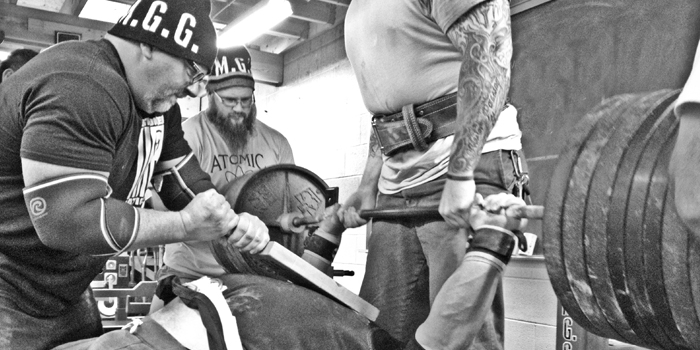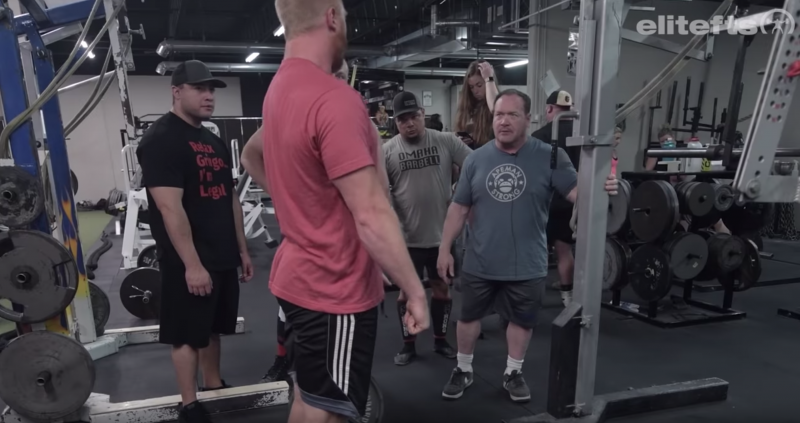
It was the summer session, the semester prior to my first year of graduate school. I had completed my undergraduate work in science and psychology, and there was an opportunity to take a geology course, which would serve a dual purpose. The first purpose was exposure to the physical world of the science I had merely read about, and the second purpose was to make a trek out West to areas where the Earth still appeared as primordial as it did billions of years ago.
The trip spanned nearly a month in duration and the geology spanned in variation from the igneous material that formed Devil’s Tower, to the sedimentary rocks of the Badlands, to the molten rocks, which were miles underground Yellowstone, whose thermal signatures can be found all over that region.
During the trip, we engaged in a dig that culminated in extracting fossils from strata. Each layer below the next reached back into time further and further and more and more ancient the deeper you would delve into the strata. We went spelunking and relished in awe of the land of total and complete darkness within the belly of the caves. Then, when illuminated with the light from a helmet lamp, your state of awe expanded tenfold as you beheld the wonder of the caves’ mighty stalactites and stalagmites that took tens of thousands of years to form, and there they were right in front of you to gaze at for as long as you desired. As the trip ventured on, we had the opportunity to take readings and collect supervised samples of the 200-degree water from geysers in an area that formed eons prior.
I recall coming back after each day’s exploration to the dorm-style overnights we sometimes stayed in along the way or the tents we used on other nights. You would find yourself laying down on the thin mattresses cot or the tent floor and looking over the day’s notes and trying to wrap your brain around the sheer volume of time involved to create what we had been seen that day and each day prior. The time frames involved in the creation of these wonders blew my mind back then, and to this day, that month-long experience helped shape how I look at duration, time, patience, and longevity.

Galyna Andrushko © 123rf.com
It is through this type of experience that one can apply the view of time with regard to virtually all facets of your life, one being your strength training. Time, as it relates to the time involved in a training program, the length of time in between meets, that confounding time during injury when you are not able to train at your maximal effort, and the span of time that you, as a competitive powerlifter, will be at your strongest in this body-brutal sport of powerlifting that we love, hate, adore, loathe, and can’t seem to live without.
Time is the healer of wounds as well as a thief in the night that, in the end, can take everything. But time is also the most precious of gifts that is squandered with a thoughtless and frivolousness that only those with the perspective of time behind them can appreciate and fully comprehend.
With a distance behind me of 30 years since my first powerlifting meet in 1989, I can see the weightiness of time and the urgency that my mentor, friend, and powerlifting coach, Ernie Frantz, conveyed to me back when I was working with him in the 1990s.
He was in his early 60s at the time and had a perspective that I did not understand but one I trusted, and because of that, I heeded his words about time without actually understanding the why behind the urgency. I would look at a training cycle of 16 weeks as a full-blown four months between day one of training and the meet. Ernie would look at that time period as a mere 14 heavy squats with a moderate 15th squat and nothing the week of the meet. That is a big mental difference.
Four months is loose and has no urgency to it. But 14 precious squat sessions, each lasting about an hour and a half, so a mere 21 or so hours of squat time. Less than a day of squat training, to put it another way. With this perspective, you clearly visualize that each squat session is fleeting and it must be exceptional as each subsequent session is deeply dependent on the success and all out, empty both barrels, effort of the session, and precious sessions prior.
RELATED: Conjugate For A Little Old Man
Listening to Ernie and thinking about time in the context of geology, one starts to see that nothing worthwhile or stands the test of time is built quickly or haphazardly. I would watch Ernie work with his athletes, and when they were banged up, he made them back off because he knew that blasting through an acute injury for the sake of the upcoming meet could lead to a chronic injury that would compromise the long game of the many, many big meets and titles that are in one’s future.

Just as a stalactite becomes mighty with the relentless and steady mineral drip of time, a great powerlifter that burns out via injury never achieves greatness, as greatness is not solely about big numbers — it is about big numbers put up consistently and over a long duration of time.
Ed Coan was great because of his huge numbers, but Ed Coan is the GOAT because of his huge numbers produced over and over and over, for not years but decades.
The point I am illustrating is that there is this balance when looking at time, and that balance is training with an urgency, as time is very much fleeting in your competitive powerlifting career but also knowing when to go slow and to heal and regroup, as there are long-term goals ahead, as powerlifting is not a destination, but rather a journey.
With time in mind, here are some aspects to heed:
- Invest the time to finish the program. Program-hopping is for the myopic and the impatient. By finishing the program, you find out after the fact if it just seemed too hard or too easy, as it later became easier or more challenging. In either case, you will know because you actually took the time to finish the program and thus learned if it is something to dump, keep, or modify to your personal physical nuances (ability or inability to recover, the need for more or less volume, etc.).
- Invest in the time to heal. Don’t just blast through an injury. The duration of time it would take to overcome the injury pales in comparison to the time it will take to recover from the injury that’s now requiring surgery that you pushed yourself into. Save that hardcore go-out-guns-blazing BS for the “here today, gone later today” crowd. Those lifters are a living cliché, and they are a dime a dozen. The gyms I have trained at over some three decades are littered with the battered and broken bodies of those driven by ego versus those willing to put in the required time to slowly and consistently drive up their totals.
- Look at your training program with the time frame of the number of lifts and hours, not the totality of the duration of time that includes your time outside of the gym. A 16-week training cycle is not months away; it is 15 heavy squats, benches, and deadlifts, and that is it. If you go with a light week and heavy week in your squat cycle, the meet is seven heavy squats away. Frame the time duration with this perspective and you quickly see how precious each and every squat session is, and why lifters who jump on their cell phone in-between each training movement simply do not get it. That stated, don’t let your lifting partner try to justify the use of their phone, as it 100 percent means their training is simply not priority one, and they are using that ridiculous thing even though mounting studies about training and phone use shows it destroys the fight and flight response and obliterates the continuity of one of these critical training days. I will go as far as to suggest if they can’t keep that thing in their gym bag for the duration of a training session, they need to be replaced with a training partner as serious as you. A training partner like you who realizes that the gym is your fortress of solitude and there is an urgency to your training as they, like you, realize the fleeting nature of time.
Time is the healer of wounds, but it can also be a thief in the night that, when squandered, can and will take everything.
READ MORE: 4 Things I Learned in Prison
In closing and keeping with the theme of geology, I leave you with Charles Darwin, naturalist, biologist, geologist, and author of On the Origin of Species. Darwin stated, “A man who dares to waste one hour of time has not discovered the value of life.”
I submit to you what you this truth for consideration. When you see someone in the weight room, eyes glazed by the dummy screen of the cell phone, or you see those half-committed to their meet training because they will get serious next week, those are the lifters who have not discovered the value of time; nor have they discovered the fleeting nature of time, nor the finite reality of their own timeline that is their life as a competitive powerlifter.
We all have that timeline, and it is in fact, very much finite. Understanding this and understanding the preciousness of time is the difference between the pain of discipline and the pain of regret.
Wishing you the best in your training and strength journey. Ever onward.










